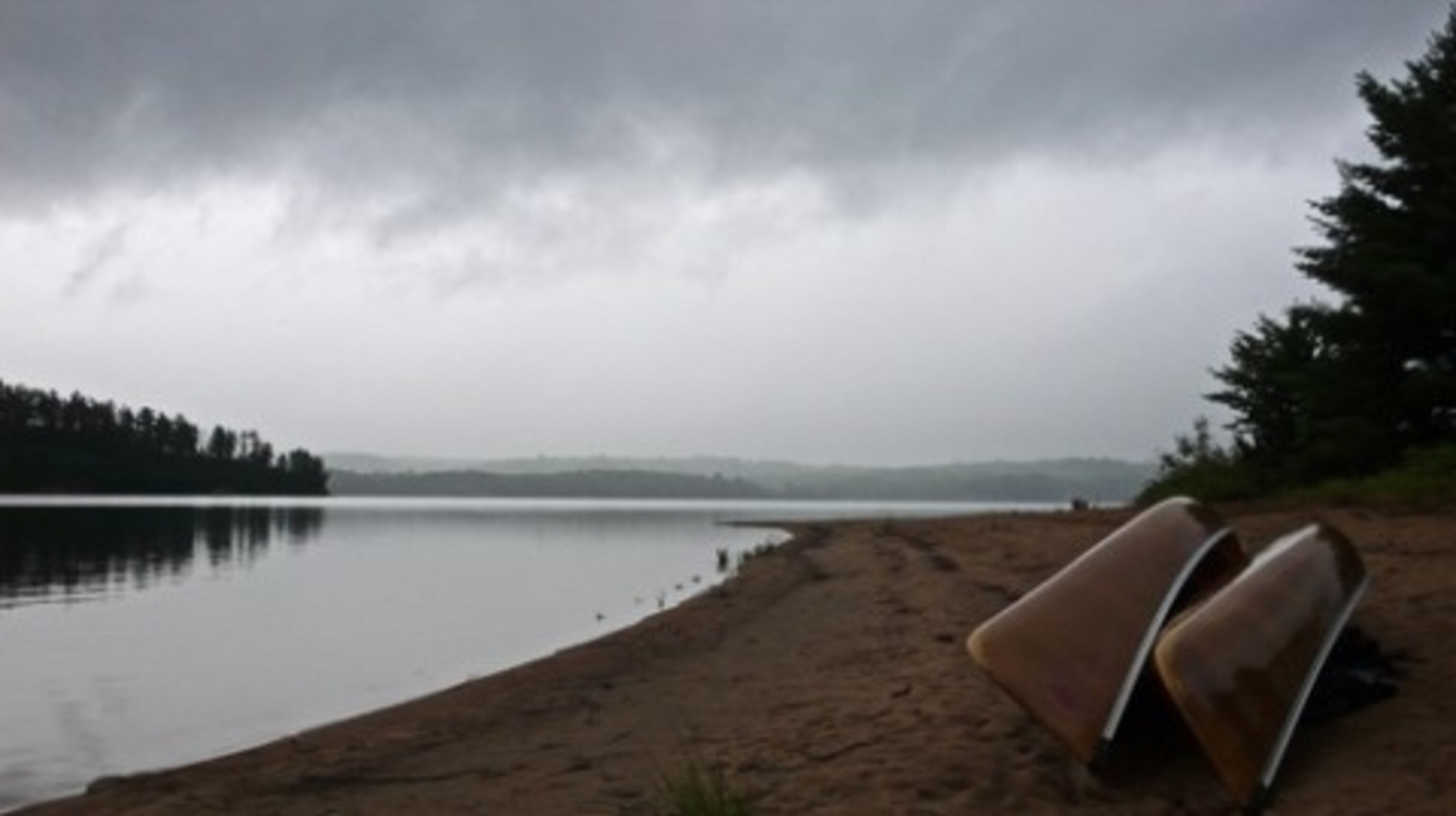
Canada By Canoe
The National Geographic Channel’s executive vice president for content, Sydney Suissa, has been paddling Canada’s Quetico Park over the past three decades. Here’s a report from his latest trip; click through for his photo essay.
A four-hour flight delay, a lost bag and a sky of flat gray soup; not an auspicious start to our canoe trip. But wilderness trips are all about improvising and we’ll have to make do. There are four of us on this trip — my longtime friend and fellow canoeist Steven from Montreal, his 24-year-old son Ben, my 20-year-old son Aaron and myself. As we load up our rental car, we know it’s going to be one of those trips where we’ll use a lot more bug juice than sunscreen.
The wilderness area we’re going to is an immense swath of the Canadian Shield carpeted with century pines, spruces, and stands of birch. Dark lakes pure enough to drink from, bogs tucked behind long sheltered bays where moose feed, orchid-lined creeks and small rivers that ebb and flow with the seasons all weave together into ever-changing networks that make this wilderness a haven for canoeists. In Minnesota, this protected area is called the Boundary Waters, and where it extends into Ontario, Canadians know it as Quetico Park.
We drive west from Thunder Bay, cross the Atlantic Watershed demarcation into the Arctic Watershed, and in about two hours arrive in Atikokan, population 700 and falling. It’s the kind of town that Neil Young had in mind in his song “Helpless” (“There is a town in North Ontario/All my memories are there…”) We go through our equipment and maps with our outfitter and spend the night in the bunkhouse. We rise early and after our ritual breakfast at the Outdoorsman, we load up our canoes and head out to the access point on Beaverhouse Lake. We push off into a stiff westerly wind wet with rain.
Our planned route involves a lot of river paddling with heavy portaging to bypass small falls and unpassable rapids and creeks. In wet weather, these rocky billy-goat paths become treacherous underfoot, especially when you’re laden with a pack and canoe and ravenous mosquitoes eat you raw. But wilderness trips are governed by weather and over our first lunch we decide to change our route, improvising a new one that will keep us close to the shores of big water where the portages that link them tend to be flat and at worst muddy. It makes for a less challenging trip, but it’s a wise call. It rains and blusters for seven of the eight days we’re in the park.
It’s a route of base camps and day trips, of rain tarps and battles to keep wood dry, and of wearing rain gear from morning till night. But this weather does bring some benefits. The flat light and steady chop on the water make for good fishing and less paddling gives us more time to create elaborate meals–filets of fresh walleye and northern pike dusted with flour, corn meal, and paprika fried on a skillet; rich tomato sauces with fresh onions, garlic, green peppers, sausages, and shaved cheese; thick slices of walnut bread toasted over an open fire and slathered with jam and peanut butter. We eat like kings.
On the second to last night, we’re blessed with a symphony from a gathering of loons, framed by a glorious sunset of violets and pinks that only happens when a weather front is pushed out by another. The next morning is clear, the water still as a mirror. At last we can swim, wash, scrape the dirt from our fingernails and watch Aaron jump from the 40-foot cliffs that edge our island site. We hang our clothes on a line, air out our sleeping bags and let the sun warm and dry us out. It doesn’t last though; the rain returns and we leave the park as we entered it–paddling into a wet westerly wind.
My first canoe trip here was 32 years ago and I’ve come back on and off ever since. I crave that sense of freedom, of liberation from cell phones and routine, of living entirely in the moment, and of being carried back in time when these same waters were the arteries of a fur trade that opened up this continent. I think of my father and how much he would have liked this place. And always, the weather reminds me how little we actually control in this world.
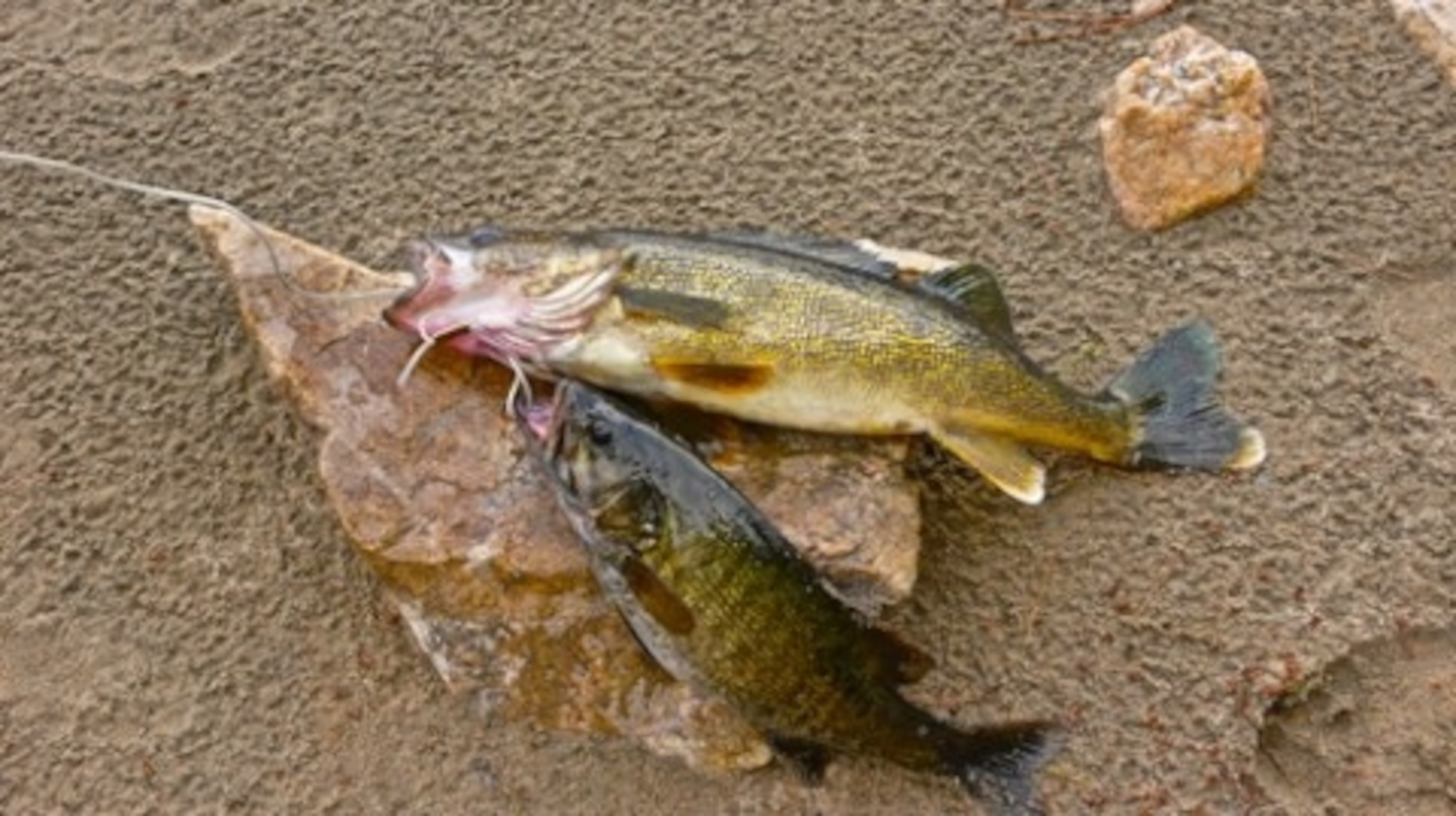
A smallmouth bass and a walleye make for a fine meal for the four of us.
Also known as pickerel, and “dore” in Quebec (for it’s golden colored belly), walleyes have extreme sensitivity to light. Overcast unsettled weather is the best time to fish for them.
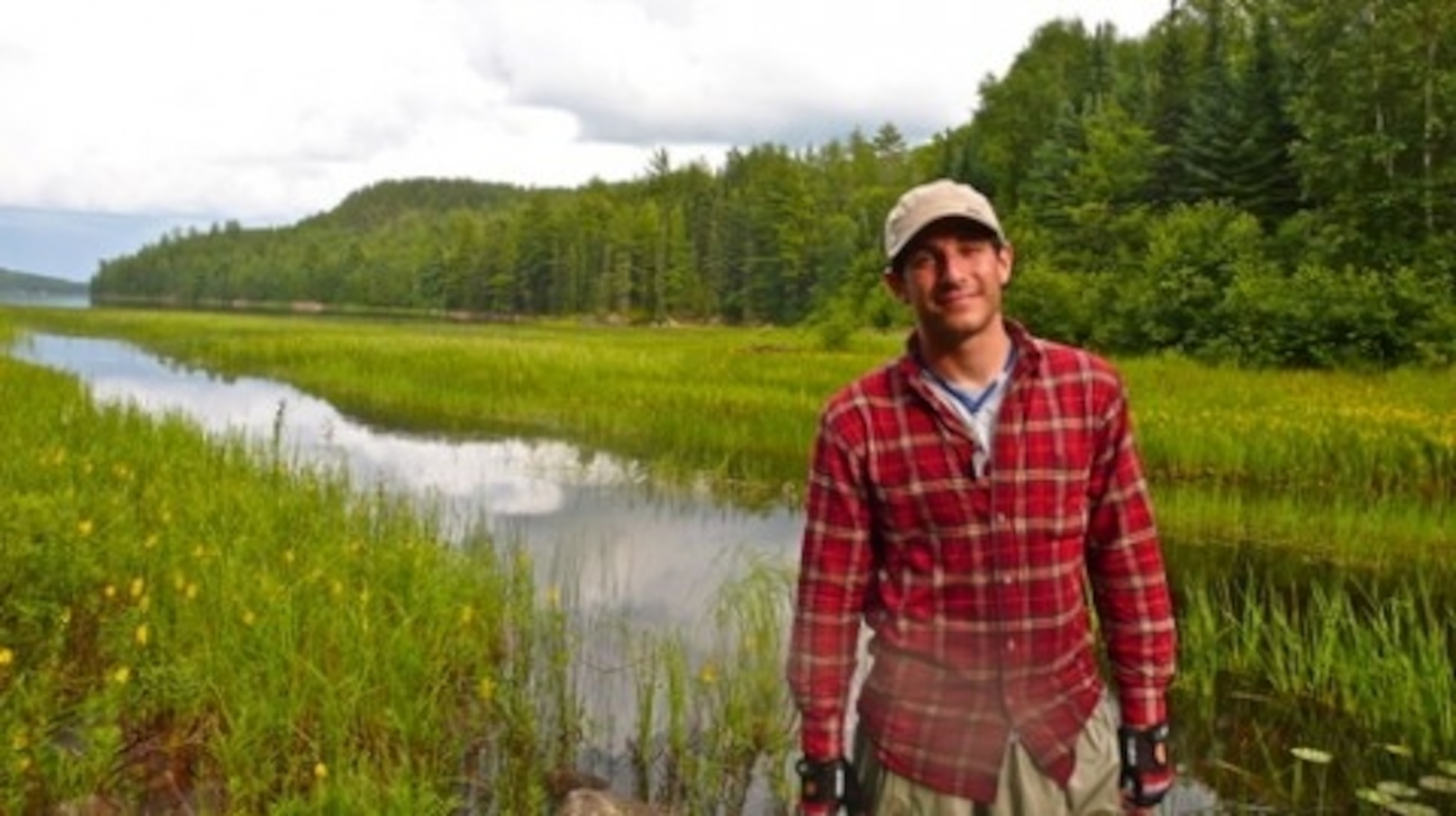
An unmarked portage followed a creek and took us through a long bog lit up with wildflowers. Eventually the creek opened into big water–a wonderful sight at the end of a mile-plus portage.
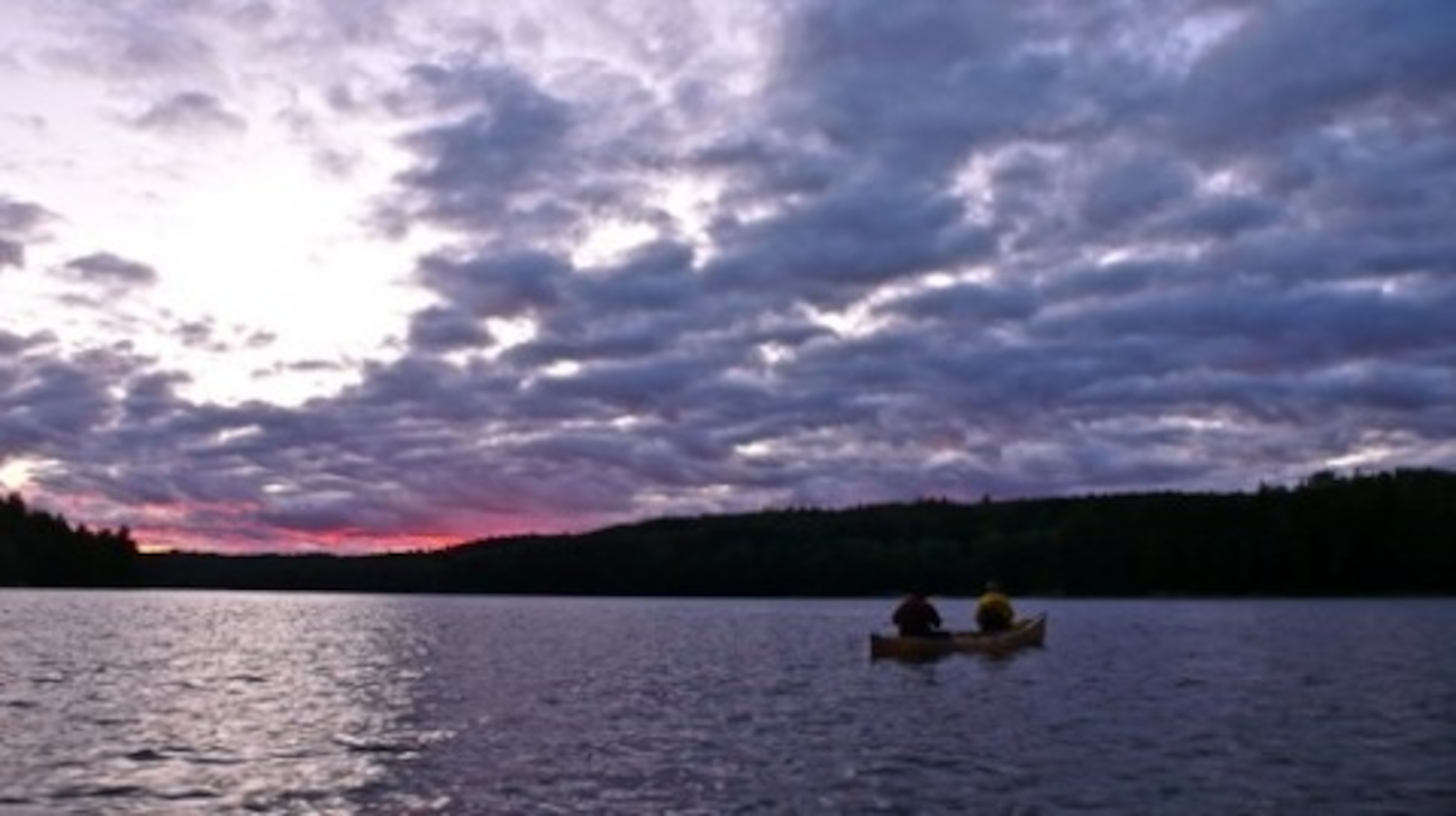
“Red sky at night sailor’s delight” turned out to be absolutely true.
- National Geographic Expeditions
The clouds cleared and the air turned dry as a high pressure blew out the low to create a memorable and much welcome sunset.
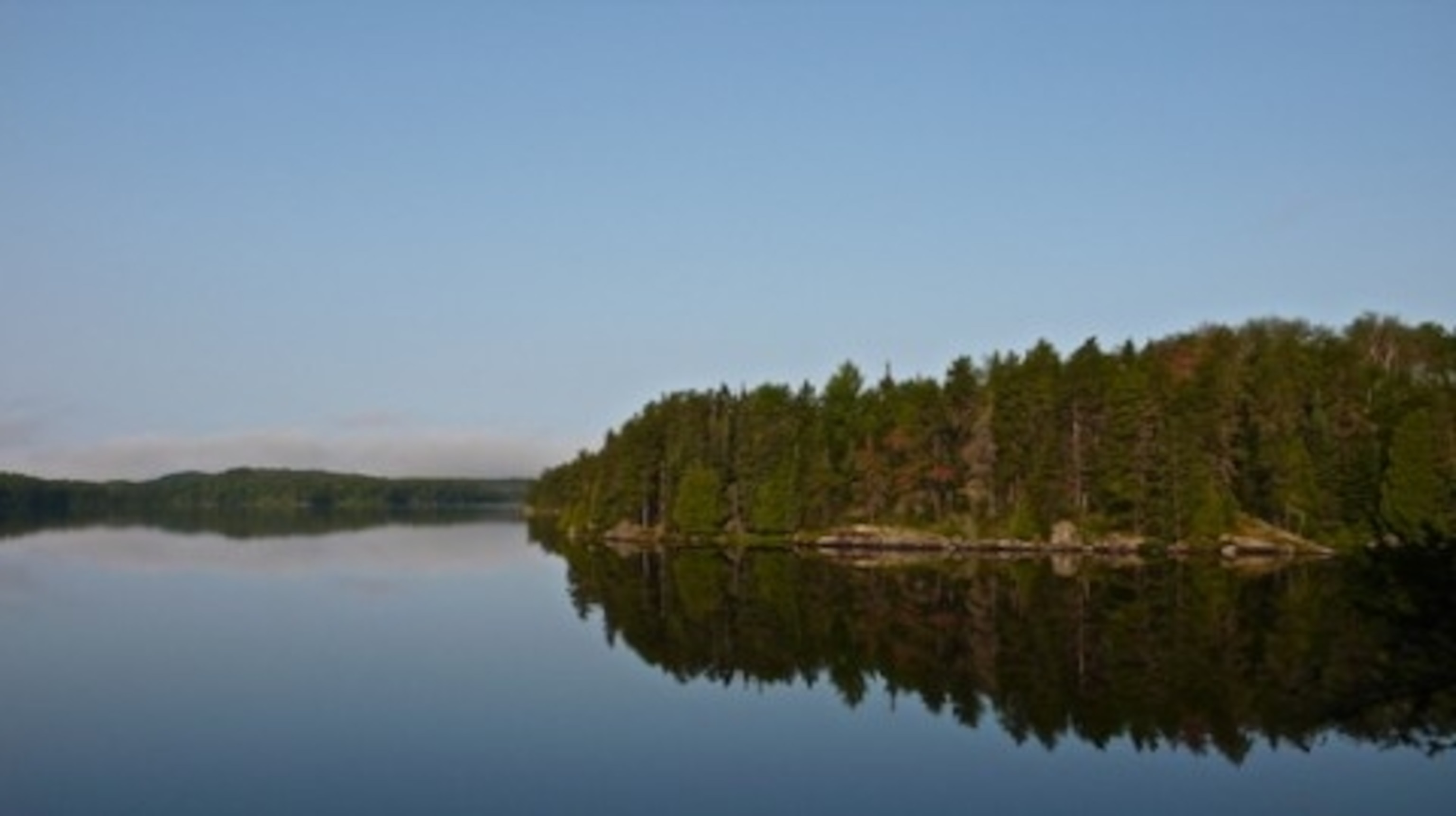
The next morning greeted us with a crisp blue sky and calm waters.
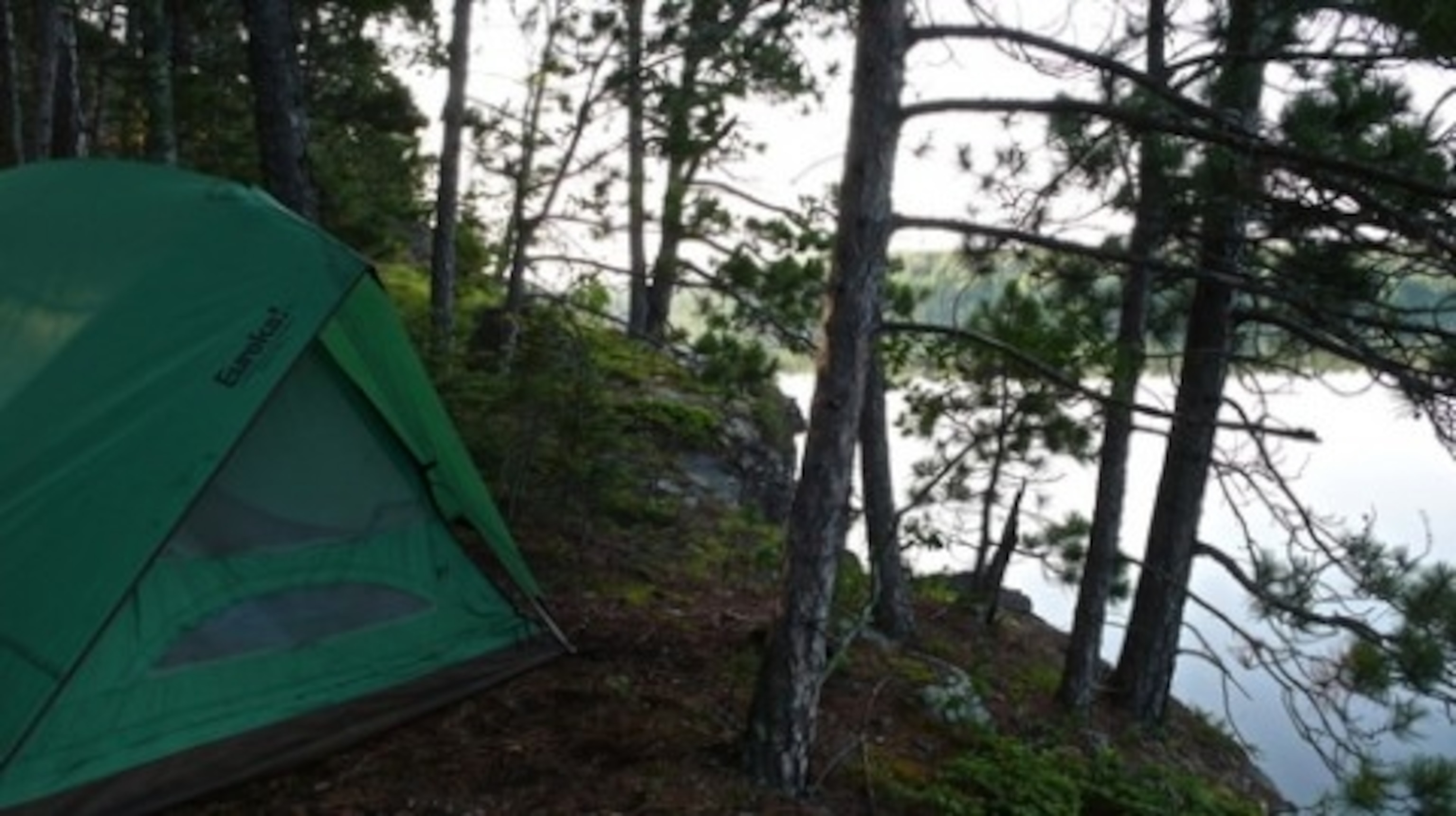
A magnificent open view greets us from our perch of 40 feet. Those very cliffs made for great jumping platforms into the deep dark waters below. The respite is short-lived–by evening the wind picked up and the rains returned.
Photos: Sydney Suissa